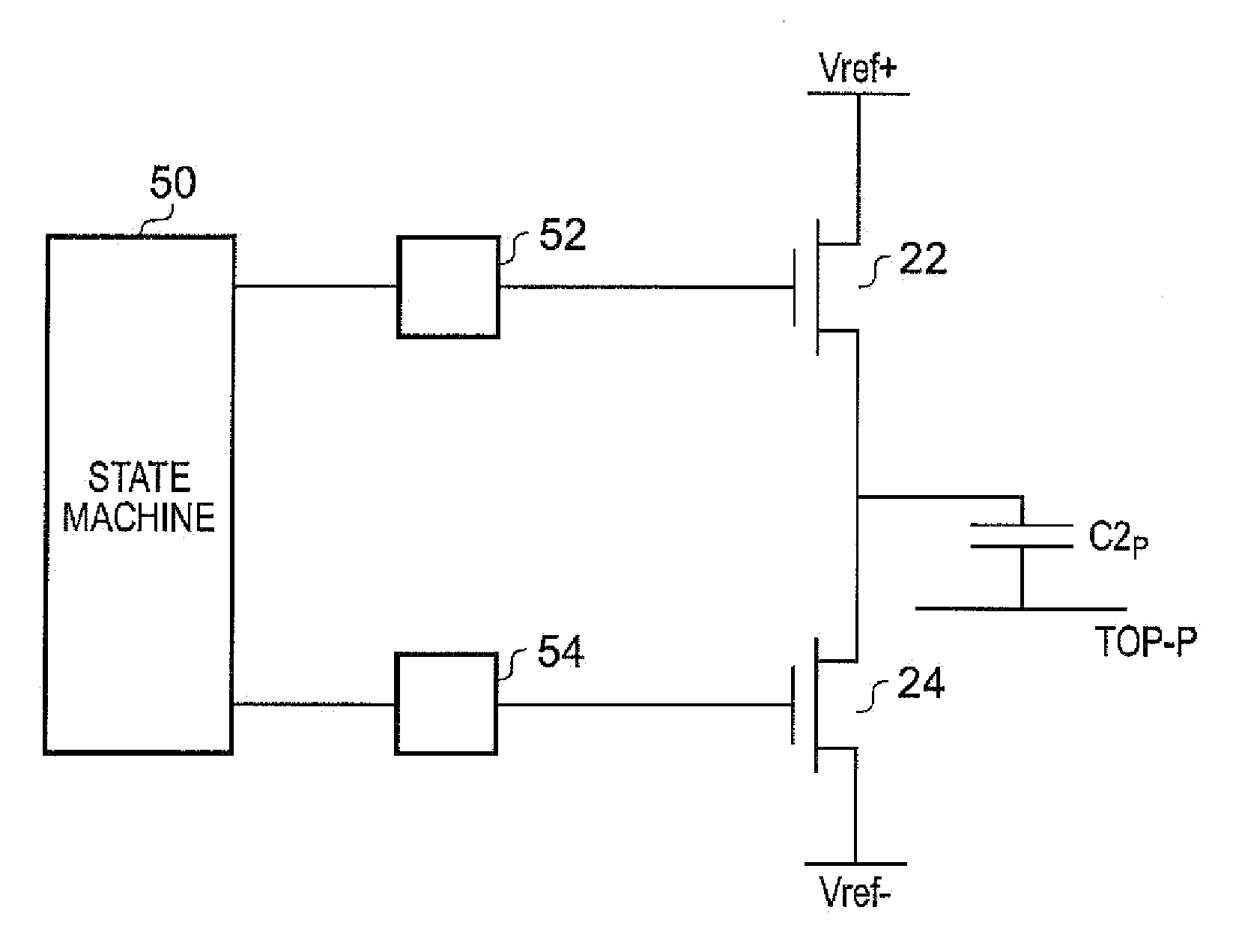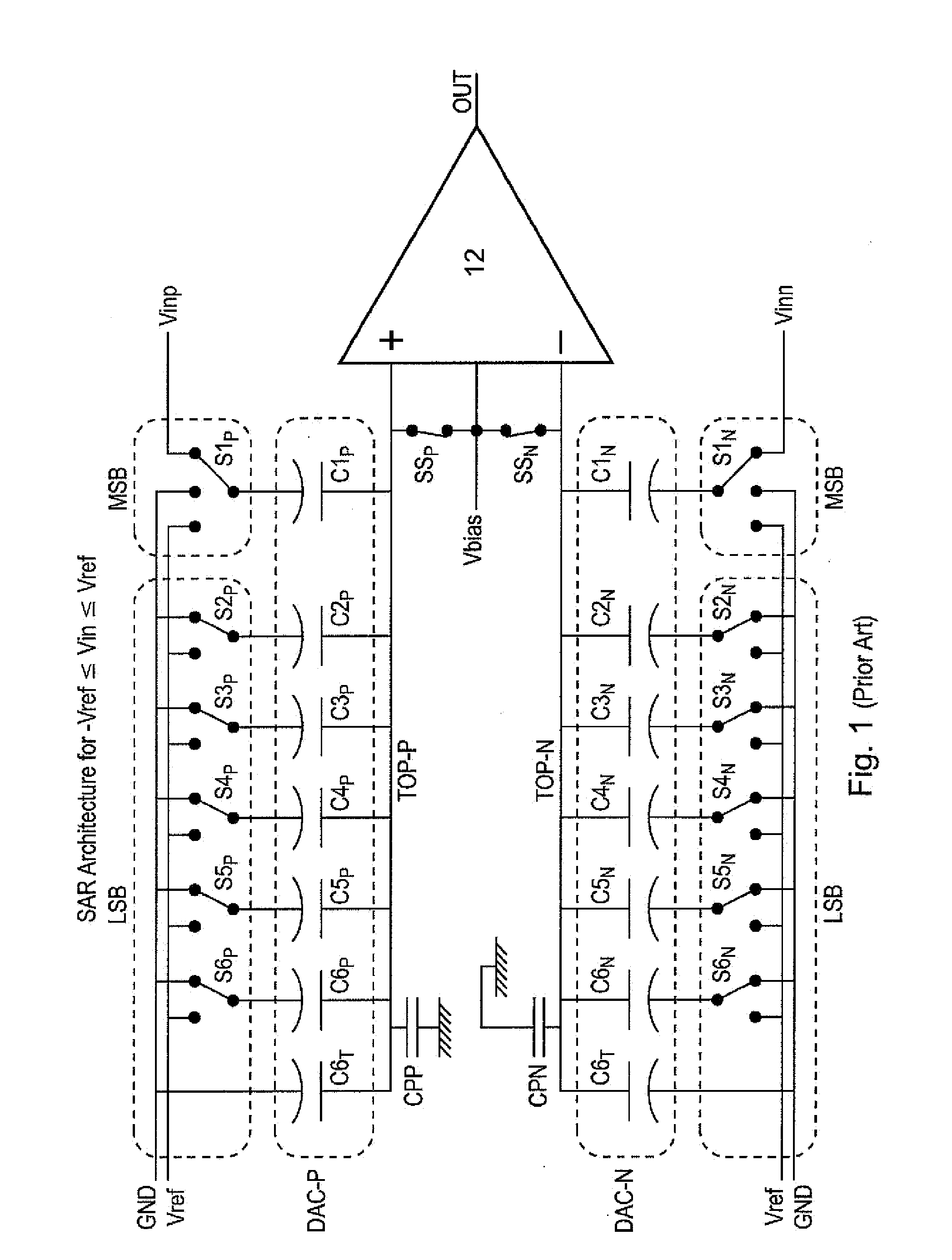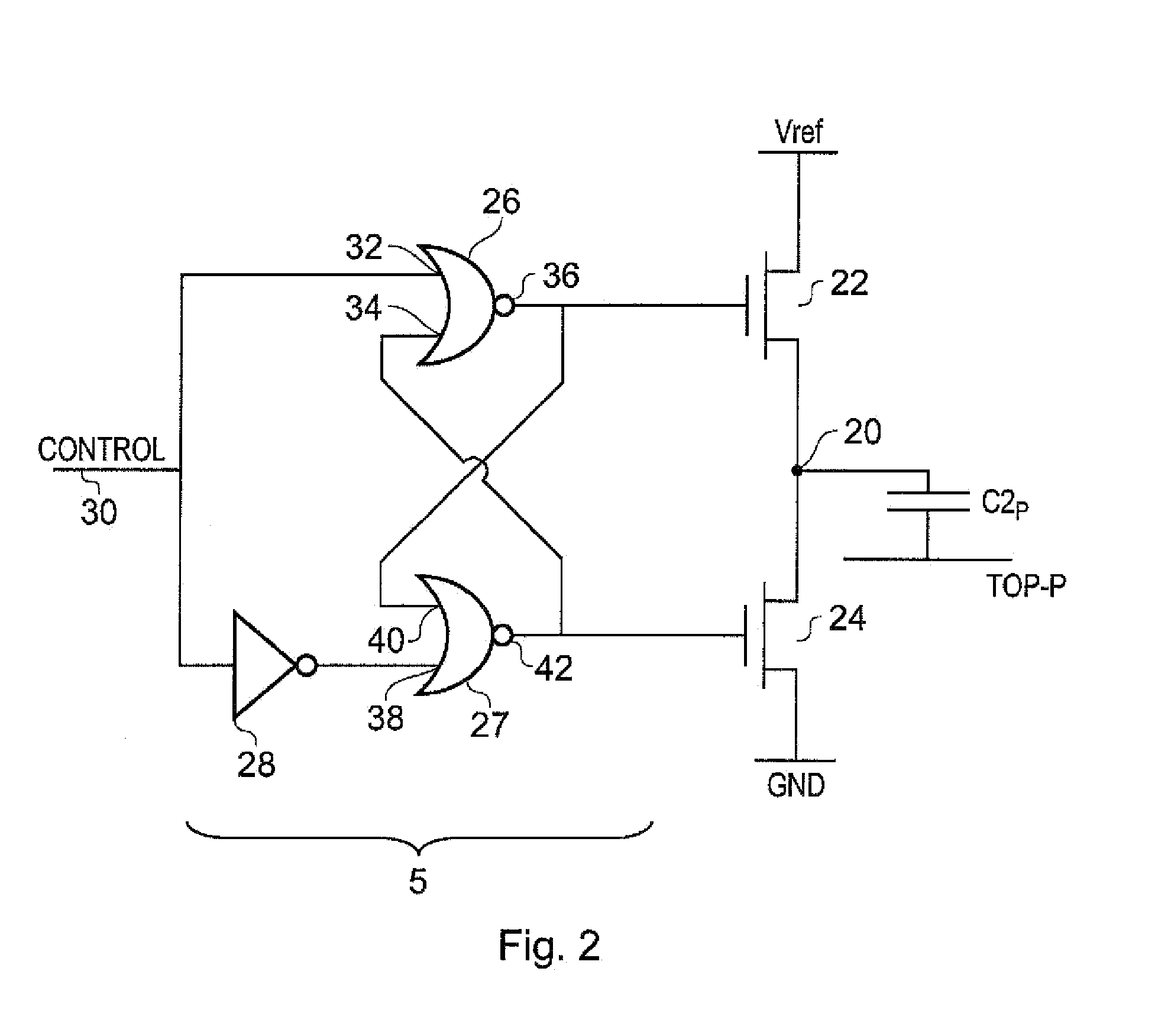Successive approximation analog to digital converter
a technology approximation method, which is applied in the direction of power consumption reduction, pulse technique, instruments, etc., can solve the problems of inaccuracy in the conversion, formation of transistors who conduct when their input voltage is increased, and insufficient dissipation within the device, so as to achieve the effect of increasing the output of analog to digital converter
- Summary
- Abstract
- Description
- Claims
- Application Information
AI Technical Summary
Benefits of technology
Problems solved by technology
Method used
Image
Examples
Embodiment Construction
[0041]FIG. 3 schematically illustrates a drive arrangement for one pair of high side and low side switches which are used to connect a capacitor of a capacitor array to either first or second reference voltages, Vref+ and Vref− within a successive approximation converter. For simplicity, the same capacitor and switching transistors are considered in FIG. 3 as were illustrated in FIG. 2.
[0042]The sequence of transistor switching performed as part of the successive approximation conversion process is controlled by a state machine 50 which selects which capacitors are to be trialled, and hence which transistors are to be selected for potential switching within any given bit trial. Each transistor has an associated transistor control circuit of which circuit 52 is arranged to control transistor 22 and the circuit 54 is arranged to control transistor 24. The circuits 52 and 54 may receive their control signals solely from the state machine 50 or, as shown in FIG. 4, they may incorporate ...
PUM
 Login to View More
Login to View More Abstract
Description
Claims
Application Information
 Login to View More
Login to View More - R&D
- Intellectual Property
- Life Sciences
- Materials
- Tech Scout
- Unparalleled Data Quality
- Higher Quality Content
- 60% Fewer Hallucinations
Browse by: Latest US Patents, China's latest patents, Technical Efficacy Thesaurus, Application Domain, Technology Topic, Popular Technical Reports.
© 2025 PatSnap. All rights reserved.Legal|Privacy policy|Modern Slavery Act Transparency Statement|Sitemap|About US| Contact US: help@patsnap.com



